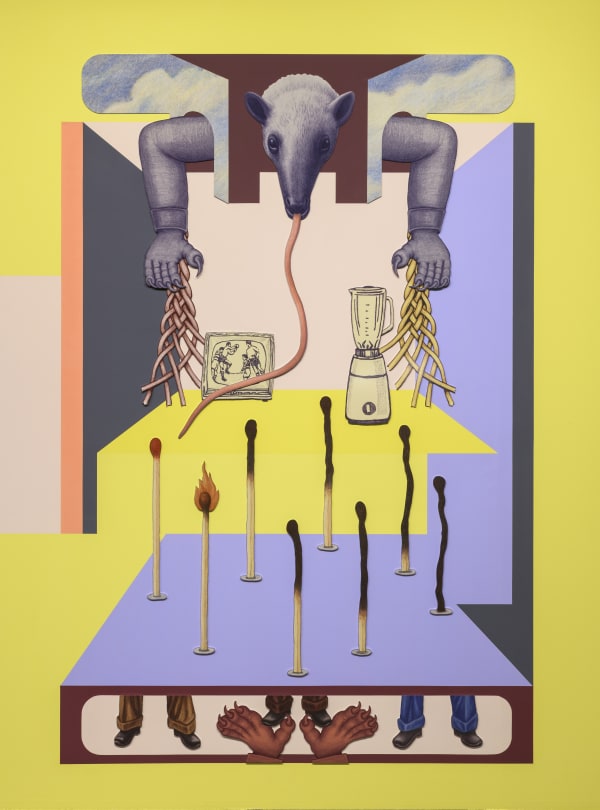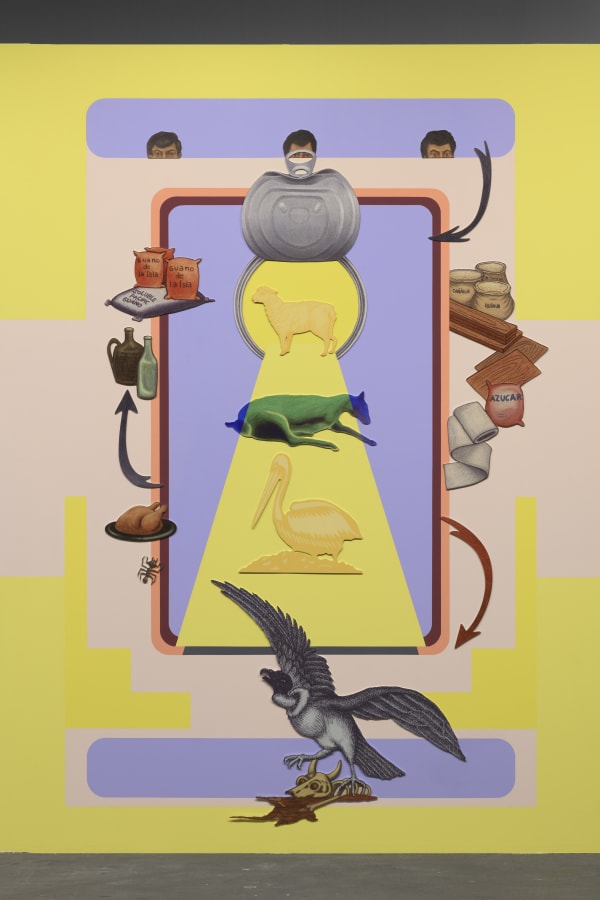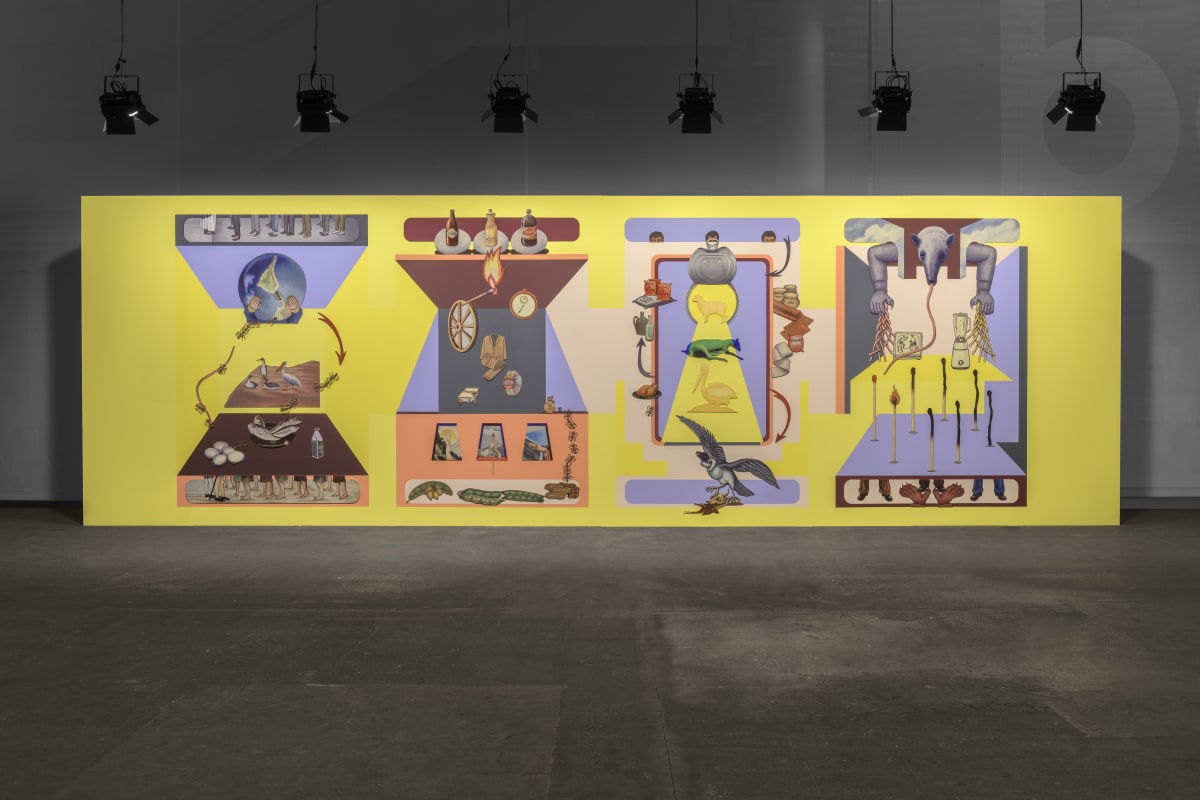Claudia Martínez Garay: Conversiones | Unlimited
GRIMM is pleased to present Conversiones, a new wall-based installation by Claudia Martínez Garay (b. 1983, Ayacucho, Peru) on view at Art Basel Unlimited, 2025, curated by Giovanni Carmine. This is the largest installation by the artist to date.
Mural work has been part of the artist's practice for several years, with a focus on site-specific commissions. In this case, the wall painting is accompanied by sublimated prints of drawings created by the artist. The 12-meter wide installation is divided into sections, where the limits of depth and dimensions play a central role. It presents a series of imagined spaces—floors, walls, ceilings, skies, and vast voids—that, through free associations and juxtapositions, narrate stories connected to the brown body and its interactions with space, people, and culture. These narratives explore how the brown body collides with, adapts to, or resists the conditions imposed by the world.
Martínez Garay invites viewers to immerse themselves in this symbolic and historically layered world. Though these moments belong to the past, they remain relevant in the present, as the understanding of diverse cultures outside the Western hegemony continues to be marked by ignorance, and many prejudices have yet to be overcome. Martínez Garay uses symmetry throughout the composition, while recurring blue areas evoke the ocean, the sky, or a sense of void; references to the sea as a colonial route, once used by explorers to ‘discover’ and claim new lands. Within this layered narrative, symbolic elements appear: the Bible, the wheel, and the watch stand as emblems of what was historically framed as civilization. In contrast, elements such as the Andean anteater, the condor, and bean sprouts reflect a lucid Andean perspective, offering a counterpoint rooted in Indigenous worldviews and lived knowledge. The drawing style references schoolbooks, the works of chroniclers, myths, and stories that are ingrained in our ways of thinking and understanding the world.
Within each space, there are clues to recent history—touching on themes like immigration, syncretism, modernity as an inseparable element of colonization, and the clichés and fixed ideas about the place that brown identities are expected to occupy in society. Each space represents a ‘season,’ not in the literal sense of climate or the seasons of the year, but rather as different historical periods. The visual structures present geometries that reveal different spaces: the top of a mountain, a room without a roof, a room without walls, a cloister, etc. Navigating these different geometric demarcations, we encounter figures that are symbolic and modest in their simplicity. These figures break through and traverse these planes of reality, often disregarding the physical constraints of the objects they represent, moving against weight, gravity, and logic.
The interpretation of these figures remains quite open, depending on the cultural background of the viewer. Conversiones highlights how historical moments remain relevant today, revealing how ignorance has shaped the misperceptions of non-Western cultures.










